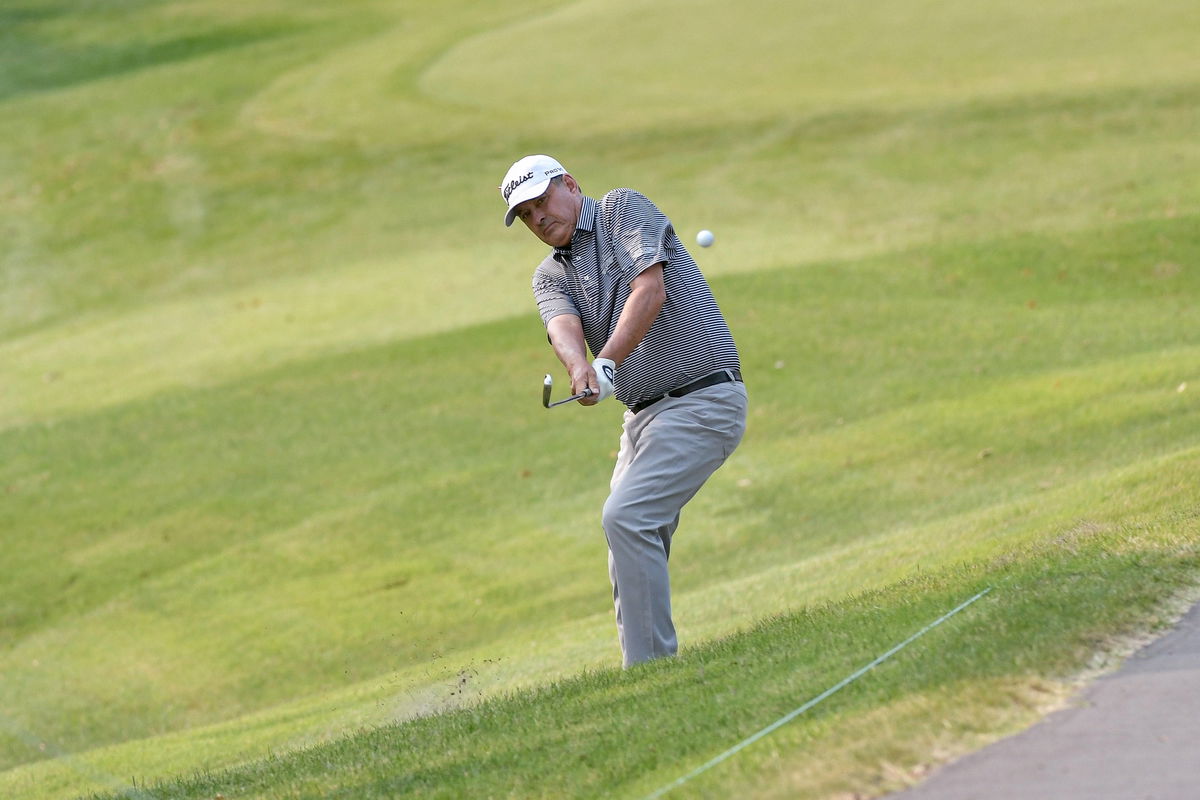
Imago
PGA, Golf Herren 2021: Ascension Charity Classic Sep 11 September 11, 2021: Loren Roberts from Memphis Tennessee hits his second shot from the side of a hill on the third hole during the second round of the Ascension Charity Classic held at Norwood Hills Country Club in Jennings, MO Richard Ulreich/CSM Jennings Missouri United States of America EDITORIAL USE ONLY Copyright: xx ZUMA-20210911_zaf_c04_005.jpg RichardxUlreichx csmphototwo785575 Credit: IMAGO / ZUMA Press Wire

Imago
PGA, Golf Herren 2021: Ascension Charity Classic Sep 11 September 11, 2021: Loren Roberts from Memphis Tennessee hits his second shot from the side of a hill on the third hole during the second round of the Ascension Charity Classic held at Norwood Hills Country Club in Jennings, MO Richard Ulreich/CSM Jennings Missouri United States of America EDITORIAL USE ONLY Copyright: xx ZUMA-20210911_zaf_c04_005.jpg RichardxUlreichx csmphototwo785575 Credit: IMAGO / ZUMA Press Wire
One aspect of the game that even the best golfers don’t ignore is technique. While they might develop incredible knowledge, experience, and skills over the years, their technique is what helps them ensure every stroke they hit finds the target more often than others. That’s what separates the likes of Scottie Scheffler, Rory McIlroy & Co. from others. The reason these big names don’t mishit their drives, approach shots, or even sand saves is that they have put in years of practice. Now you, too, can master that art.
Watch What’s Trending Now!
We’re here to share a few drills you can practice to make optimum low-point contact second nature to you on your weekend out with friends.
Top Stories
Another PGA Tour Analyst to Leave Golf Channel Days After Cara Banks’ Unexpected Exit – Report

‘Sorry for Your Loss’: Phil Mickelson Sends Prayers as Golf Reporter Opens Up About Daughter’s Passing

Tiger Woods’ GF Receives Emotional Message from Daughter Kai Trump After Turning 48

Concerns Arise as Amanda Balionis Says She’s Exhausted After Demanding Golf Schedule

LPGA Legend’s Son, 14, Shows No Remorse After Beating His Mom at Golf

ADVERTISEMENT
Line drill
: Draw a line on the grass or turf where the ball will be placed. Practice swinging the club until you consistently hit on or just after the surface of the line.
The line drill helps you pick up the habit of finding the low point of contact consistently. It resolves a few issues when put into practice. One of them is that it helps you understand how you can move your weight to get in line to hit the ball based on the lie. On a flat surface, the body usually leans forward towards the leading leg, ensuring the downward swing comes in contact with the ball. If the lie is on the decline, then more of the weight will be shifted towards the front. However, if the ball is on an incline, then the weight will be shifted towards the trailing foot.
ADVERTISEMENT

ADVERTISEMENT
Secondly, the line drill also helps you practice the right wrist position for your swing. At the point of contact, the club should be angled towards the inside of the body. If it is angled too much towards the outside, then the club will hit the ground much before it reaches the line drawn on the surface. As explained in the HackMotion YouTube tutorial, with the right wrist position and weight distribution, the line drill will drastically improve your swing.
Towel behind the ball drill
: Place a towel 6-10 inches behind the ball. Practice swinging without contacting the towel.
ADVERTISEMENT
The idea behind the method is to ensure the club finds the perfect low point angle of the ball in a consistent swing form. If the swing comes from a higher angle, then it will be difficult to get air on the ball. However, if you twist your wrist more and catch a lower angle, then not only will you get a bigger divot, but also you will not gain as much distance. Practice by keeping the towel at the furthest distance possible in your swing trajectory, and gradually lower the gap until you reach 6 inches. If you can make optimum contact consistently from 6 inches, then you have achieved your goal.
Two-coin challenge drill
: Place a coin in the position of the ball and another just ahead of it. Practice striking the top of the first coin so that you hit the bottom of the second coin and chip it.
ADVERTISEMENT
Once you have mastered your swinging, it’s time to fine-tune the point of contact. And there is no better way to do so than with two coins. Using a wedge, try to hit the coin that is placed in front of the one that is positioned where the ball might be. Ideally, you should be able to chip the second coin up consistently. Regularly practicing this drill will help you refine your low-point control strokes and improve your ball-striking abilities drastically. And you will be able to strike the ball accurately, even if another hidden golf ball pops out from under it, as it did for Rory McIlroy in The Open 2025 at Royal Portrush.
P5 punch drill
: Position your swing when your lead arm is parallel to the ground, and practice the downward sequence from that point with a ‘punch.’
ADVERTISEMENT
The P5 position, or the position of the swing where your leading arm is parallel to the ground, is the most important position of the swing. Especially when hitting an iron, that is the perfect position from which you can hit a punch stroke that will generate great power and accuracy. Once you reach the P5 position, ensure that your leading wrist is flat and your trailing wrist is bent. Keep the arms and wrists in the same position and punch down for a swing to execute the perfect shot. Once you can consistently find the low point of contact, gradually increase the swing length to practice a more powerful shot.
Playing with the point drill
: Position yourself in your natural swinging position and try different shoulder and wrist extensions to understand how the swing changes.
ADVERTISEMENT
An important part of every drill is to also understand how you can adjust to various conditions and challenges on the course. With certain limitations, you have to modify your approach to ensure you can still follow through with the shot without giving away strokes. That’s why it’s important to also play around with the point drills. In your natural swinging position, lean towards your leading shoulder to see where your swing finds the divot. Perform the same action by leaning towards the trailing shoulder to see how far back your swing catches the grass.
Similarly, you can also extend or hold back your swing to understand what the point of contact of the club to the surface is. Experimenting with the right mix and practicing it will help you escape even the toughest of challenges on the course, just like many pros.
ADVERTISEMENT
ADVERTISEMENT
ADVERTISEMENT

